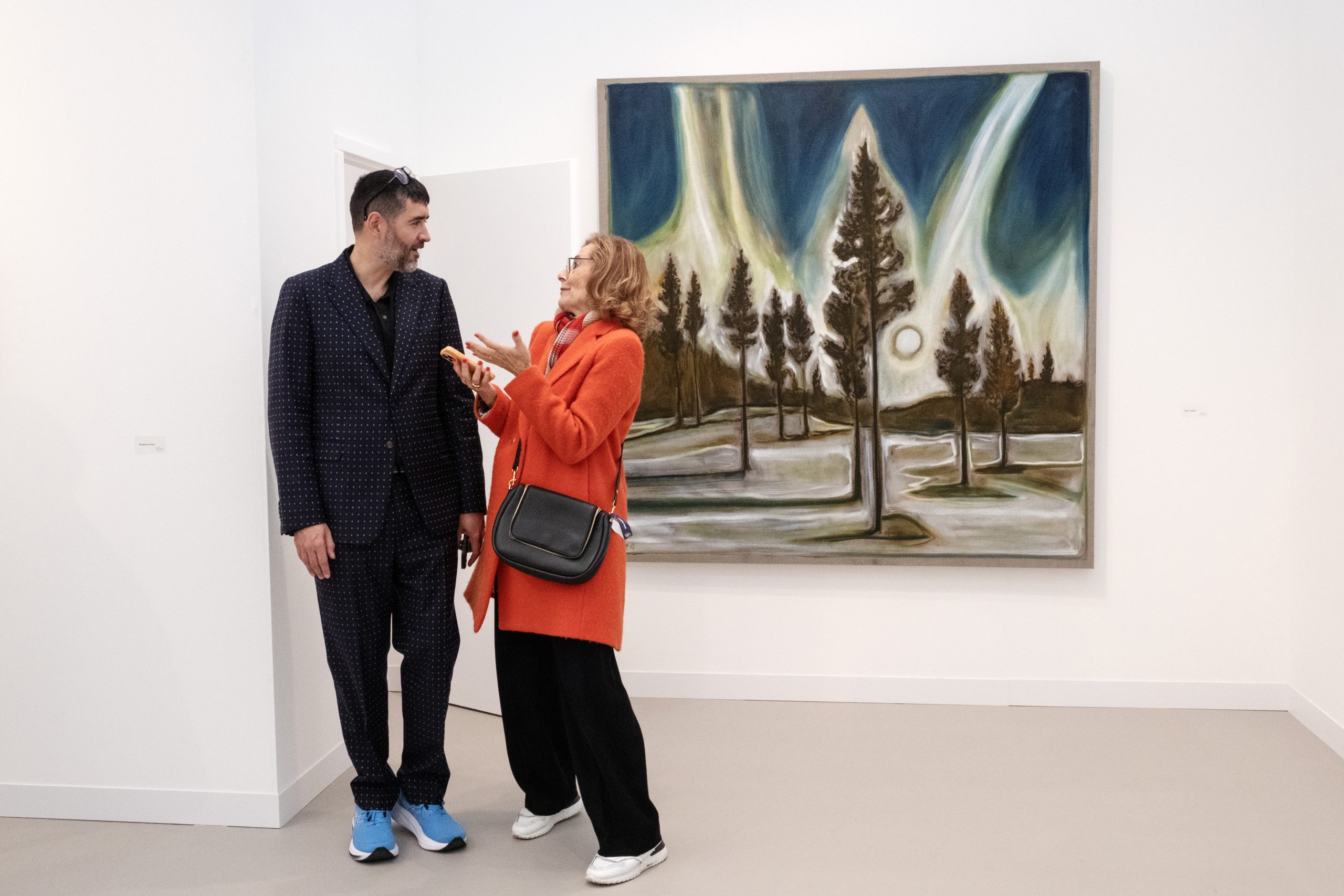A version of this article originally appeared in The Back Room, our lively recap funneling only the week’s must-know art industry intel into a nimble read you’ll actually enjoy. Artnet News Pro members get exclusive access—subscribe now to receive the newsletter in your inbox every Friday.
The latest Art Basel and UBS Survey of Global Collecting says that collectors spent roughly a third less on art in 2023 than in 2022, with the largest decrease in spending at the highest levels. (Median spending barely dropped, moving only from $50,165 in 2022 to $50,000 last year.) This shouldn’t be news to regular readers of The Back Room, where I’ve been analyzing Artnet’s data on this trend all year. Our Mid-Year Intelligence Report revealed a nearly 30 percent drop in auction sales in the first half of this year.
The Art Basel-UBS report, written by Clare McAndrew of Arts Economics, tracks the buying patterns of more than 3,660 high net-worth individuals (HNWIs) from 14 regions during 2023 and the first half of 2024. It’s a robust read at more than 200 pages, but what comes through overall is a sense that collectors’ behaviors are are starting to shift, and not just in relation to the current market climate. Here are some of the additional stats that caught my eye.
1. Millennials Are Buying Less
The report states that, while median spending has not fallen markedly, the big drop in average spend is mostly due to the buying behavior of millennials, or collectors between 28 and 43 years old. In 2022, this age group spent the most on art thanks to a small group of big spenders at the top end. Yet, in 2023, their average outlay on art dropped from $864,940 to $395,000, or 54 percent.
Guests gathered at Art Basel Hong Kong in 2023. It was the fair’s largest edition since 2019. Courtesy Art Basel.
A lot of ink has been spilled over the last decade about what millennials do or don’t do, financially speaking—recall the great debate over avocado toast versus home ownership in 2017. It seems that this generation’s spending patterns and priorities remain difficult to pin down, especially when it comes to larger investments (art included).
Studies have shown that millennials have struggled to rise to the wealth levels of previous generations due to successive economic crises that have affected them in the developmental stages of their careers. Psychologically speaking, it makes perfect sense to me (a millennial) to stop spending and start saving amid another market contraction—maybe even to the point of overcorrection—given what we have lived through. Yet, millennials may also become “the richest generation in history” within the next 20 years thanks to…
2. The Great Wealth Transfer
Approximately $84.4 trillion in assets will be transferred from older generations to younger ones over the next two decades in the U.S. alone in what has become known as the “great wealth transfer,” according to the collecting report. Succession planning has been a hot topic for HNWIs and around 43 percent of HNWIs plan to leave their art to their children.

Gallery assistants hang a pastel by French Impressionist artist Edgar Degas at the Walker Art Gallery in Liverpool, gifted as part of an inheritance tax scheme. Oli Scarff/ AFP via Getty Images.
Inherited wealth is starting to outstrip self-made wealth in the billionaire class. That’s a “dramatic change” from recent years when the share of inherited wealth was as low as 14 percent in 2018, the report says. This shift is already fueling rising economic inequality.
McAndrew notes that inequality may not hinder art sales: “Greater wealth in the top percentiles of the population has undoubtedly been a key factor buoying strong sales and rising prices at the top of the market in the past.” But, she also warns that it creates a “narrow market” that is “susceptible to certain risks and limitations,” threatening long-term, sustainable growth.
3. Fairs in Flux?
Given that the report is published in part by Art Basel, one might wonder if there is an implicit interest in the art fair model’s success. McAndrew notes that of those polled for the survey, a wide majority of HNWIs are visiting more art events, which includes fairs but also gallery shows.

The VIP day of Art Basel Paris at Grand Palais on October 16, 2024 in Paris, France. Photo: Luc Castel/Getty Images.
Crucially, however, “they don’t necessarily buy there.” Indeed, a smaller concentration of “highly engaged” collectors are frequenting 41 percent fewer fairs than five years ago—down from an average of 89 events in 2019 to 51 in 2024. The hassle, cost, and carbon footprint of travel may be partly to blame for this decrease in fair-going, as may be “the fact that so many works are sold by the time the fair opens,” McAndrew says. Many HNWIs are also increasingly likely to buy remotely.
While fairs may still be helpful in building visibility for emerging and mid-tier galleries, if fewer people are buying there, one wonders how long this will hold true.

